4.6.9 - Apollo 14 - on the way home
Whatever the difficulties of finding out when a photograph was taken, we can occasionally work out the starting point for the investigation thanks to other things in the photographic sequence. AS14-73-10352 (Source) occurs after a series of images which, if they are zoomed in on, reveal the words “Fluid electrophoresis demonstration” on the CM control panel. This experiment was also broadcast on TV, and began just after midnight on the 8th. The photgraphs of Earth in the same magazine must therefore have been taken on the 8th.
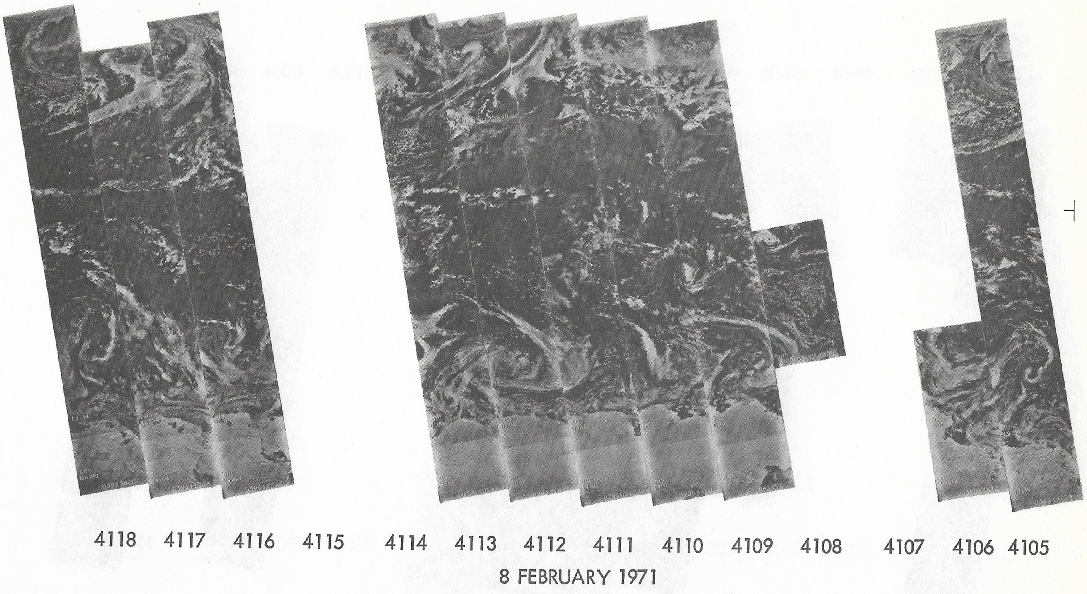
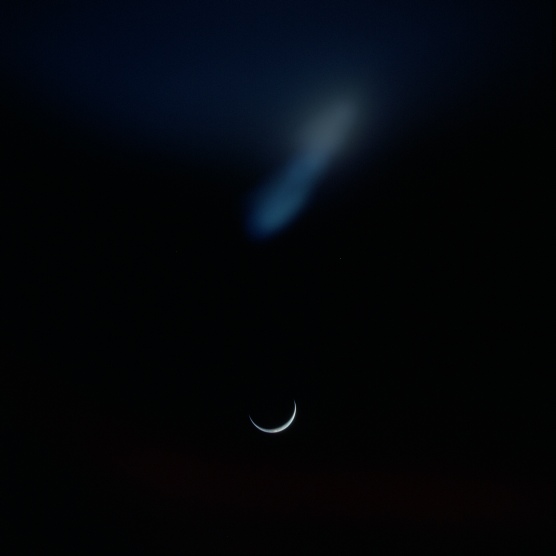
Figure 4.6.9.1: AS14-76-10352 (source given in text)
This was an in-flight demonstration of a process designed to separate different molecules in a zero gravity environment. At 02:00 on the 8th, the crew discuss with Capcom when this should be done. At this point the terminator line would be over Alaska, which like previous images means that we do not have direct ESSA coverage of the northern hemisphere. They then tell Capcom that they would like to do that experiment 'after the next P23', which is a navigation procedure involving fixing on stars. The next P23 procedure after this occurs at 03:00. There’s also discussion about where to store the faulty docking probe, with photographs of these at the startof the magazine.
At 16:00 on the 8th, the crew are asked how they are proceeding with the in-flight demonstrations, and they state that they have finished almost all of them other than some in progress work on metal composites, but more importantly this conversation occurs shortly after waking from a rest period, and the last recorded communication prior to this was at 05:00 (although they report that they were 'not yet ready to go to sleep'. It seems reasonable to assume, therefore, that the photographs of Earth must have been taken after 03:00 and before 16:00 on the 8th.
In the photograph itself, once levels are adjusted to remove the over-brightened part, the most obvious feature is a large mass of cloud in the widest part of the crescent. To the north of this is a thin light grey lobe extending towards the terminator, but little detail is discernible in the thinner part of the crescent. South of this feature, it is possible to make out a south-east trending line of thin cloud, as well as another line parallel with this further south still. Towards the thinnest part of the southern crescent is a more substantial looking patch of white. There are also a couple of patches of brown in the thickest part of the crescent, suggestive of land masses.
There is mention of Earth dark side photography taking place at 02:47 on the 9th, 18 hours before re-entry. It is not clear how these images were taken, but at that time the terminator would again have been crossing the Alaskan border, and then the Pacific. Given the orientation of the Earth on the 9th, the thickest part of the crescent would be roughly in line with the Mexican border, and there is no large cloud mass in that area that would correspond to the one in the photograph. The crew also report that they aren't able to see any of the Earth's crescent at that point, so we can discount this.
Looking at the land masses that are covered by the timespan available to us, the most likely looking area is around the Asian coast between Thailand and Asia, which would be on the terminator around 11:30, nicely in their rest period.
Using this as a basis, figure 4.6.9.2 shows the analysis. The satellite data used is a composite of the available ESSA and NIMBUS data.
There does seem to be a degree of correspondence, but again there can not be absolute certainty in the exact location covered by the Apollo image. For the record the NIMBUS orbit (4112) was commenced at 13:05. ESSA's southern hemisphere image track for the 7th (number 9, pass 4764) would have been commenced at 07:01 on the 8th. The northern hemisphere ESSA image was taken 24 hours later, and will obviously not be a completely accurate picture of conditions for the day before, but will be a development of it.
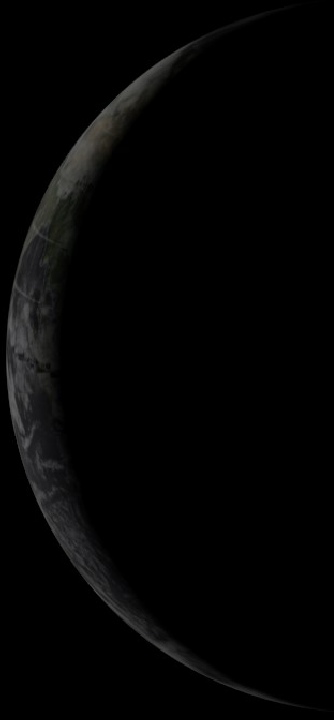
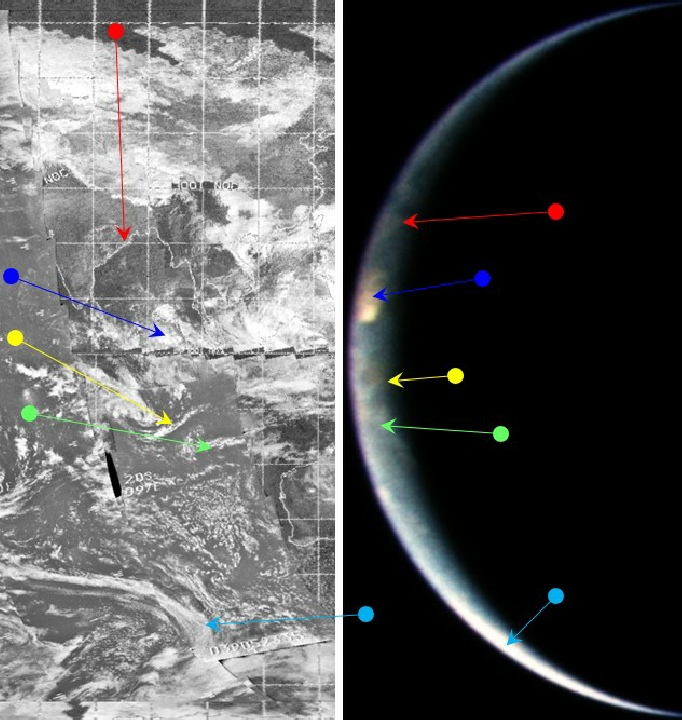
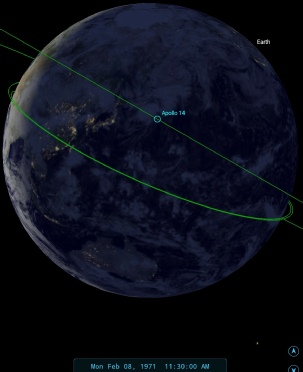
Figure 4.6.9.2: AS14-76-10352 compared with a composite of ESSA and NIMBUS satellite data from the 7th and 8th of February. 3D reconstruction of those satellite images and SkySafari depiction of terminator.
The lack of clear detail, and a similar lack of corroboration from the crew in terms of what they were photographing and when, means that these last few images are open to considerable speculation. I think I’ve drawn a reasonable conclusion, but I’m happy to be corrected.
That’s the last image of the whole Earth, the next ones are on re-entry, so there’s one last page to click on.




